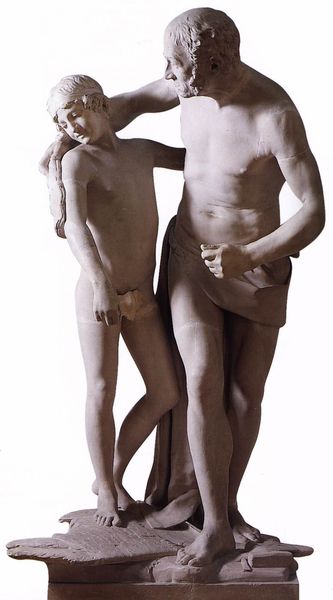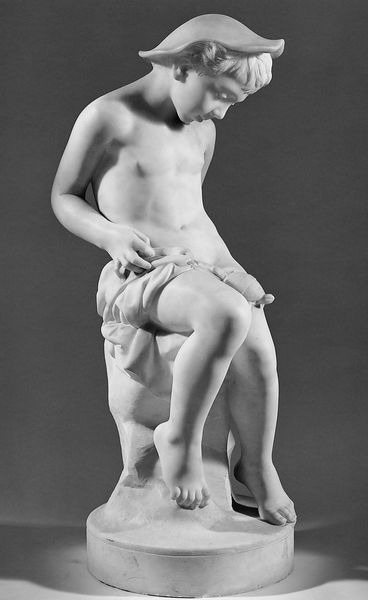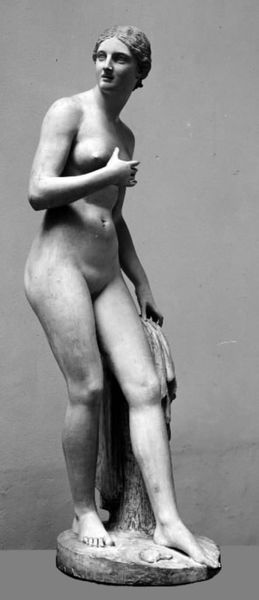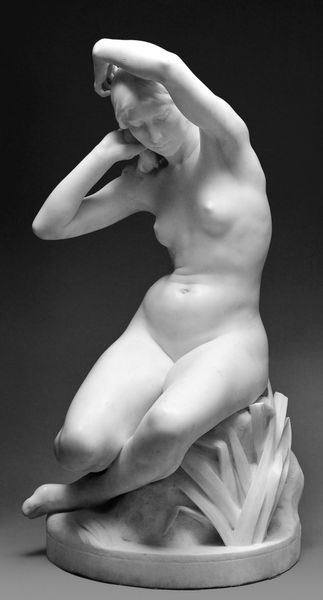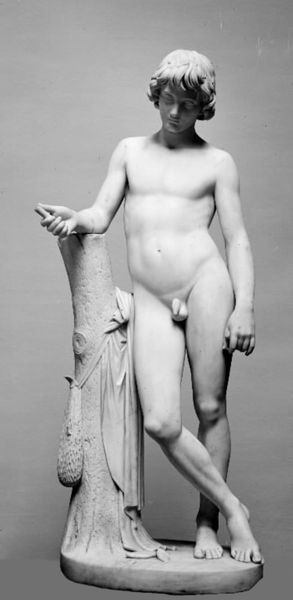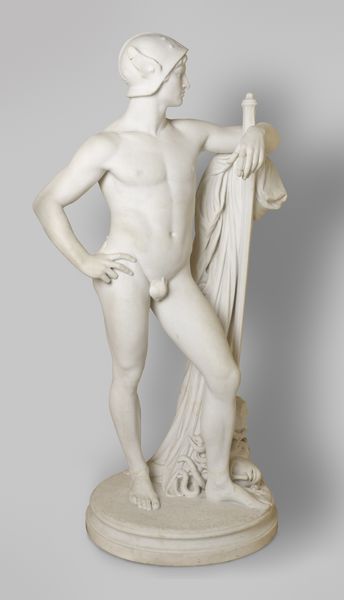
sculpture, marble
#
sculpture
#
frontview face
#
figuration
#
11_renaissance
#
sculpture
#
decorative-art
#
marble
#
nude
Dimensions: Height: 21 1/2 in. (54.6 cm)
Copyright: Public Domain
Editor: This sculpture, "Nymph and Satyr" made around 1506 by Zaccaria Zacchi, uses marble. The smoothness of the marble contrasts really nicely with the rougher base. I'm curious, how does its materiality influence your interpretation of it? Curator: Given a materialist approach, the use of marble is central. Consider where Zacchi sourced this stone and the social conditions for doing so; who controlled the quarries, who labored there? The seemingly pristine surface hides a history of extraction, production and likely exploitation. Editor: That's a really interesting point! I hadn't considered that side of things. The smooth finish seems to be celebrating beauty, but it obscures the work needed to produce it. Curator: Exactly. And it wasn't just about raw material, but the skillset involved in transforming raw matter into fine art. The division between artisan and "artist" hides more than it reveals, what with marble dust exposure risks. How much were these artisans appreciated for the labor versus the patrons? Editor: Right, thinking about that division makes the sculpture almost... complicated. It's no longer just a beautiful object. I’m trying to grasp how labor, production, the very human efforts are etched onto it. Curator: Think of the act of carving itself, a form of repetitive physical labor, slowly chipping away. That act shapes the image, literally, while being largely absent from the appreciation that the object attracts today. Editor: Wow, I see it differently now. I’ll never look at a Renaissance sculpture the same way. Thanks. Curator: My pleasure! Always question the presented perfection! The value is found in looking at its historical processes, labor implications and class dynamics.
Comments
No comments
Be the first to comment and join the conversation on the ultimate creative platform.
